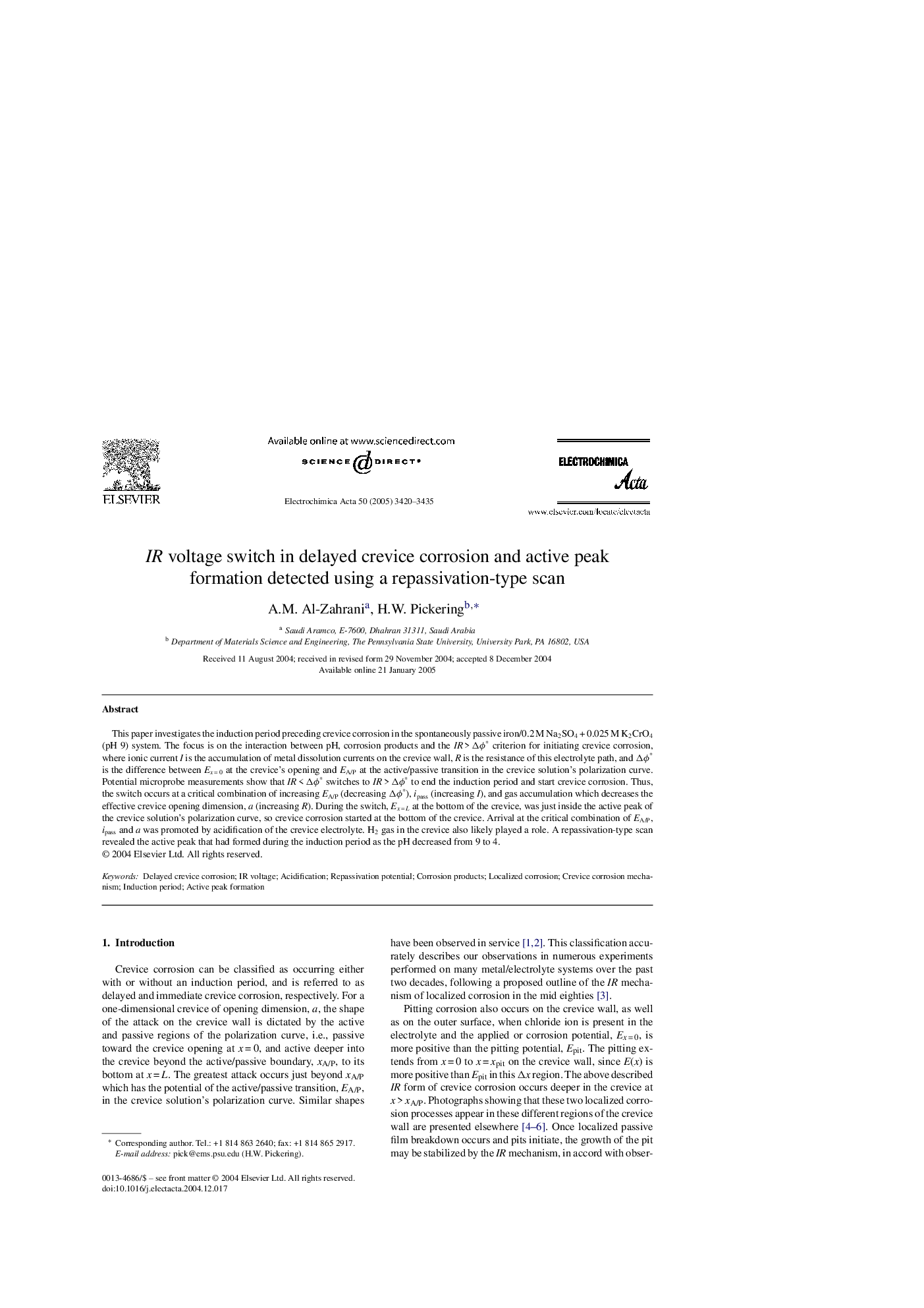| Article ID | Journal | Published Year | Pages | File Type |
|---|---|---|---|---|
| 196732 | Electrochimica Acta | 2005 | 16 Pages |
This paper investigates the induction period preceding crevice corrosion in the spontaneously passive iron/0.2 M Na2SO4 + 0.025 M K2CrO4 (pH 9) system. The focus is on the interaction between pH, corrosion products and the IR > Δϕ* criterion for initiating crevice corrosion, where ionic current I is the accumulation of metal dissolution currents on the crevice wall, R is the resistance of this electrolyte path, and Δϕ* is the difference between Ex = 0 at the crevice's opening and EA/P at the active/passive transition in the crevice solution's polarization curve. Potential microprobe measurements show that IR < Δϕ* switches to IR > Δϕ* to end the induction period and start crevice corrosion. Thus, the switch occurs at a critical combination of increasing EA/P (decreasing Δϕ*), ipass (increasing I), and gas accumulation which decreases the effective crevice opening dimension, a (increasing R). During the switch, Ex = L at the bottom of the crevice, was just inside the active peak of the crevice solution's polarization curve, so crevice corrosion started at the bottom of the crevice. Arrival at the critical combination of EA/P, ipass and a was promoted by acidification of the crevice electrolyte. H2 gas in the crevice also likely played a role. A repassivation-type scan revealed the active peak that had formed during the induction period as the pH decreased from 9 to 4.
